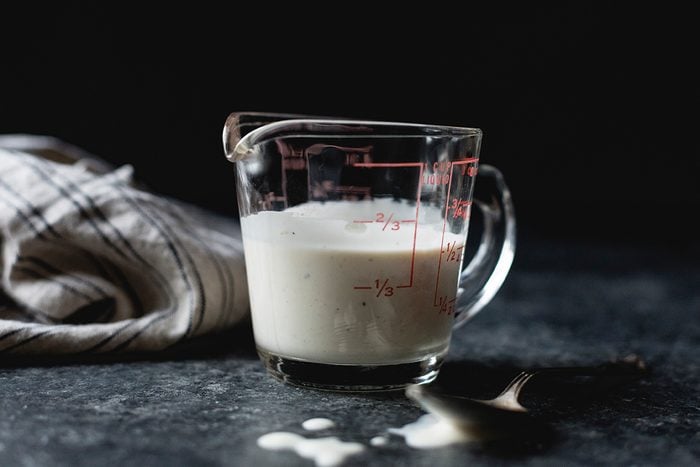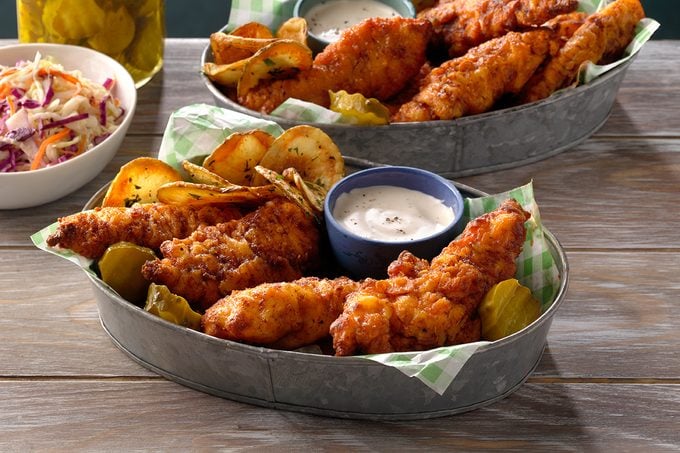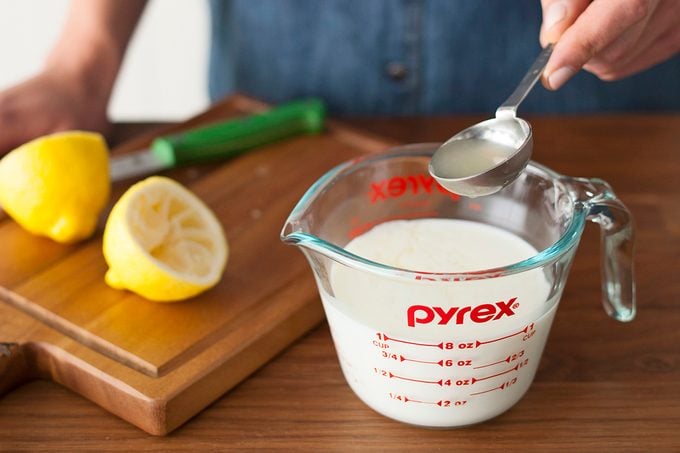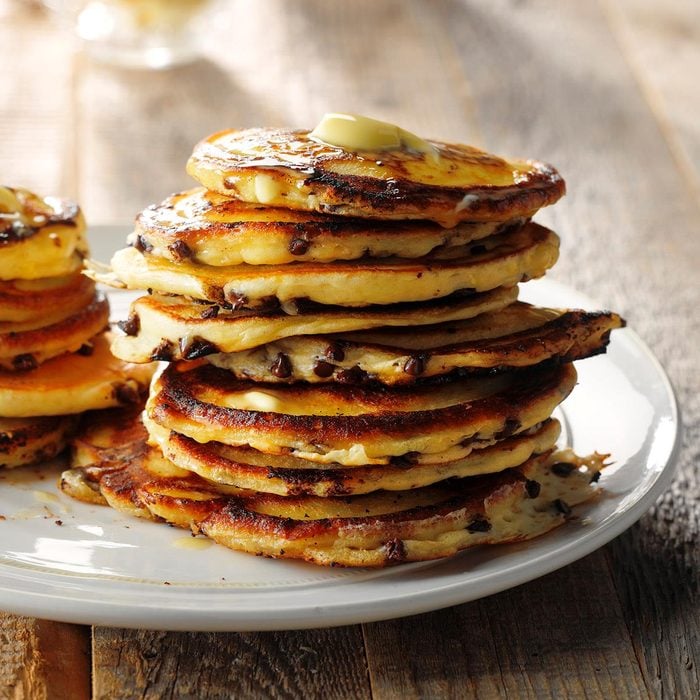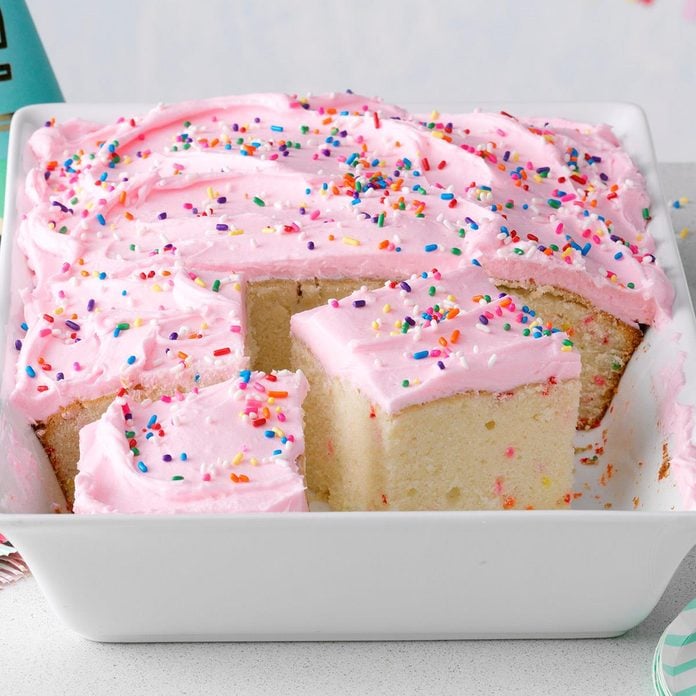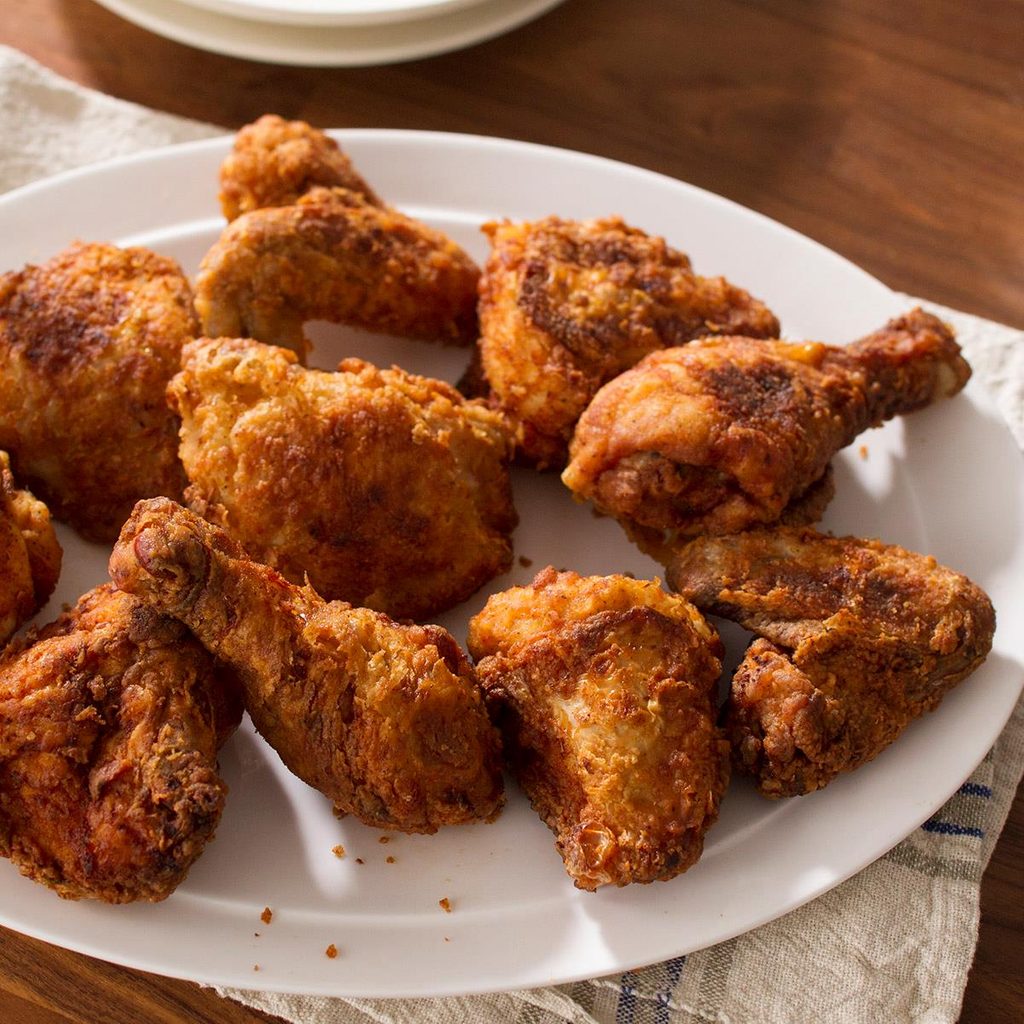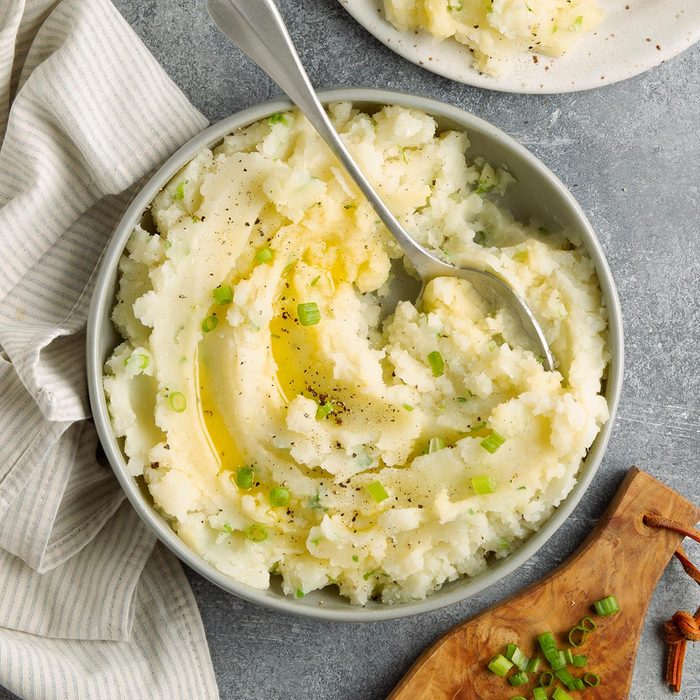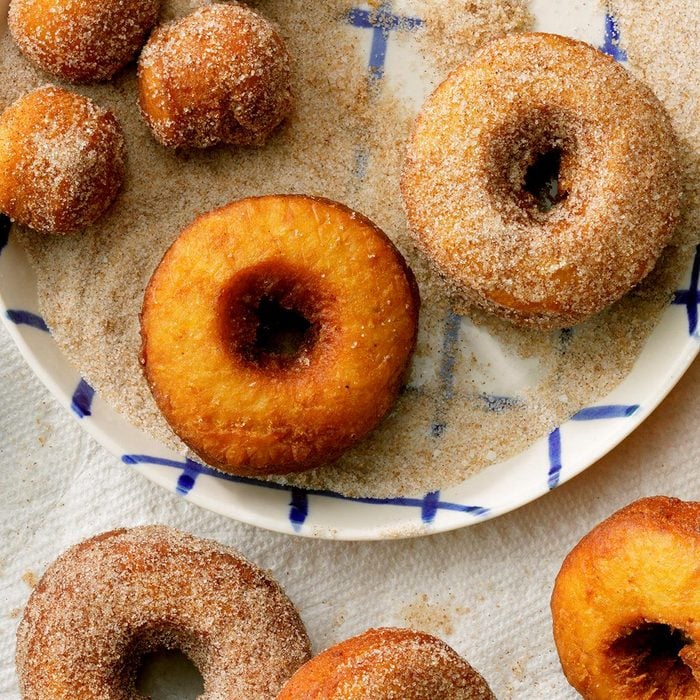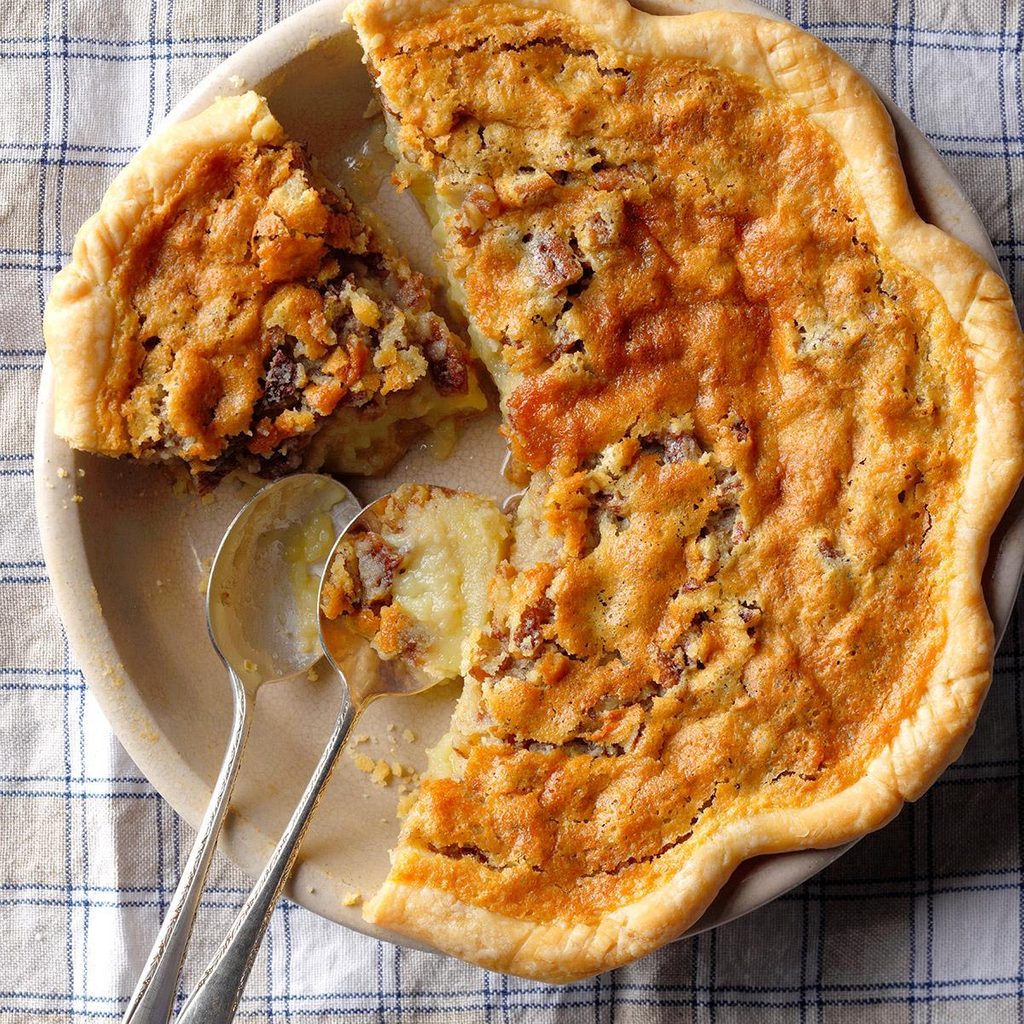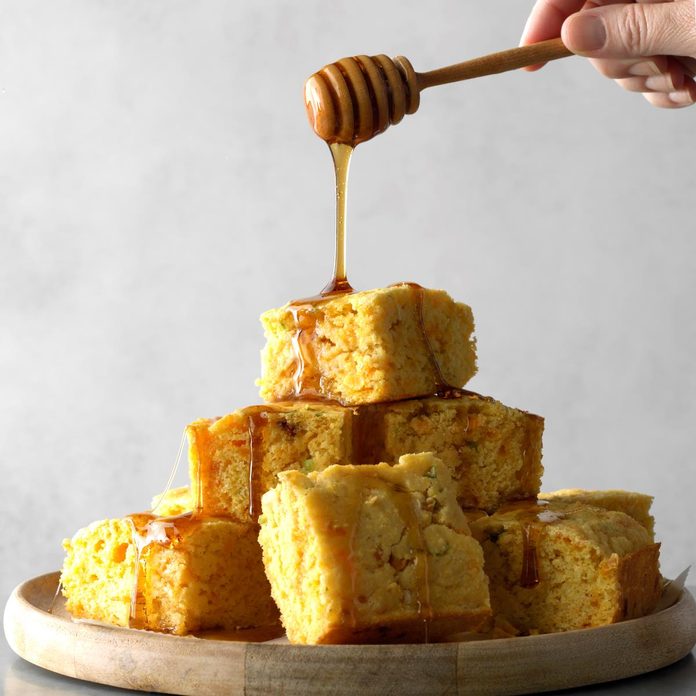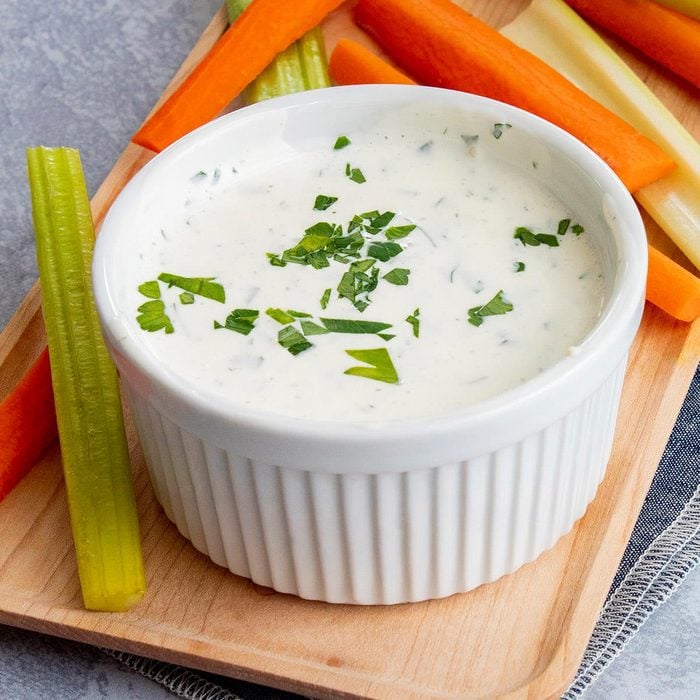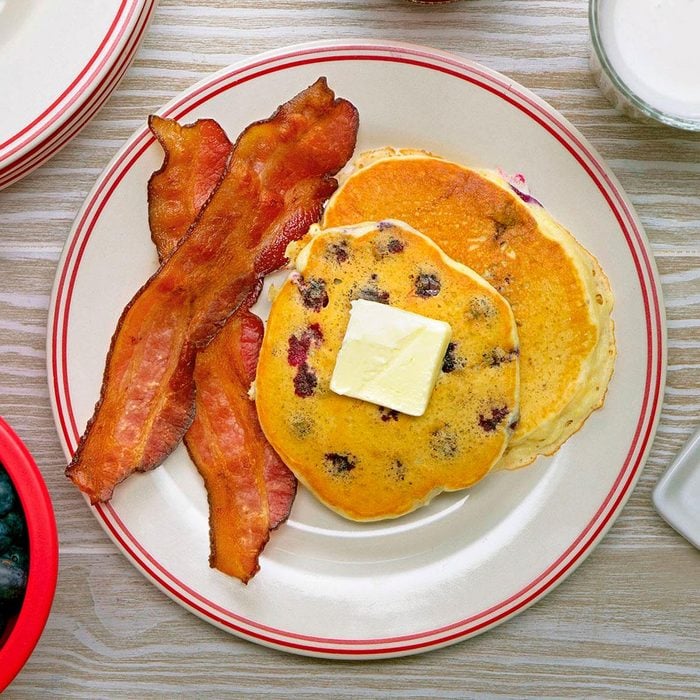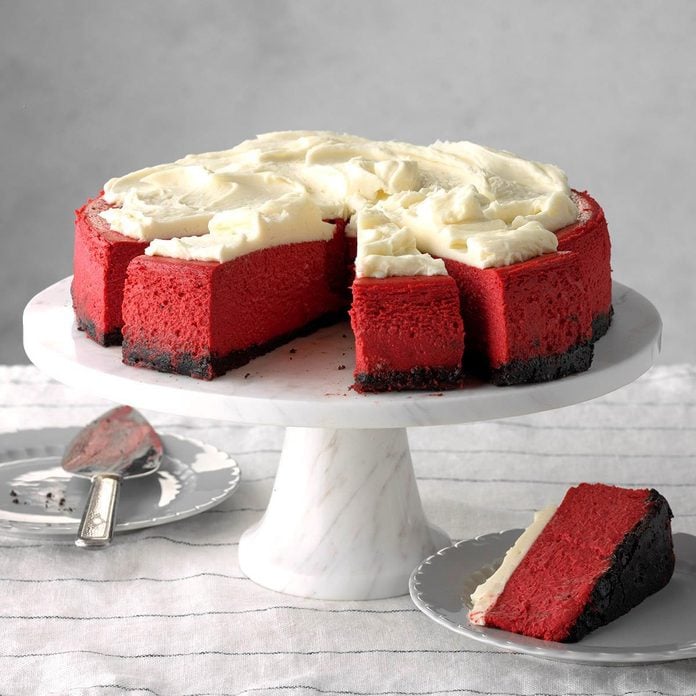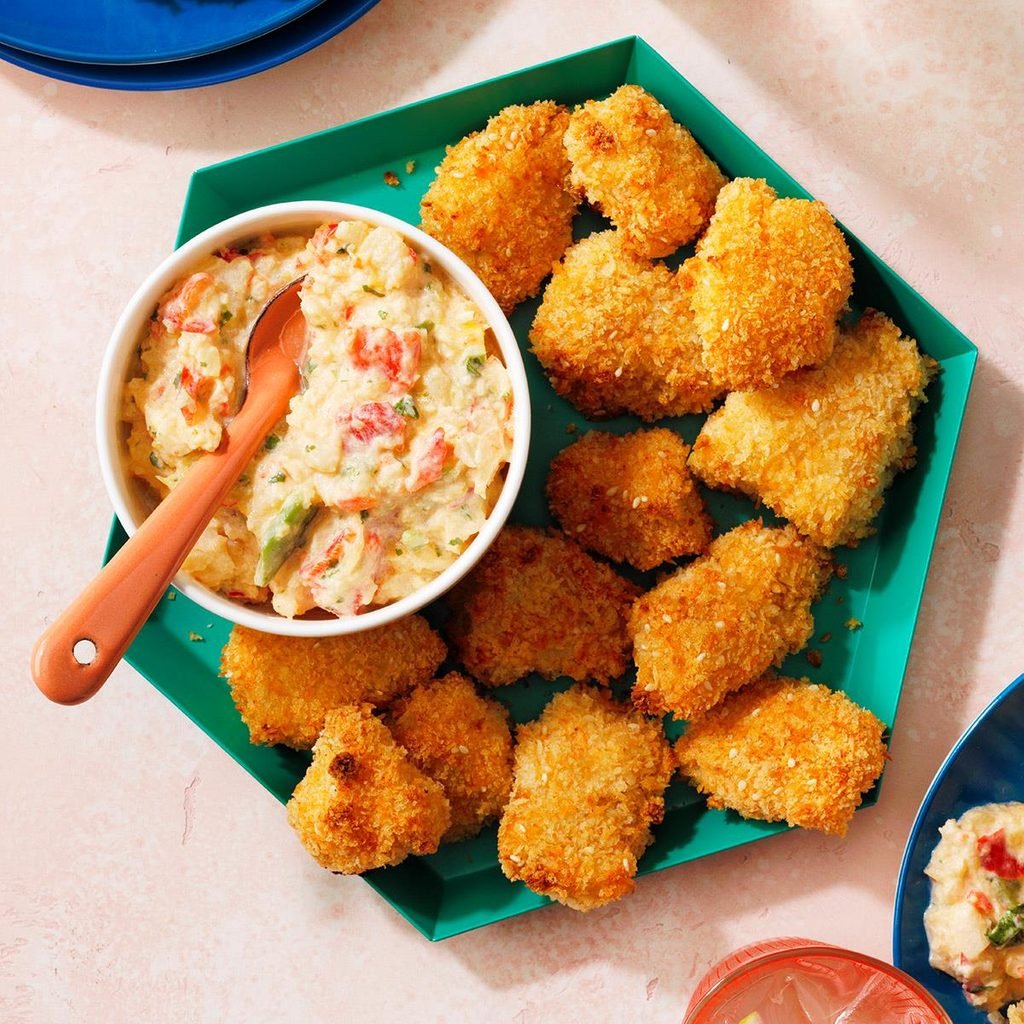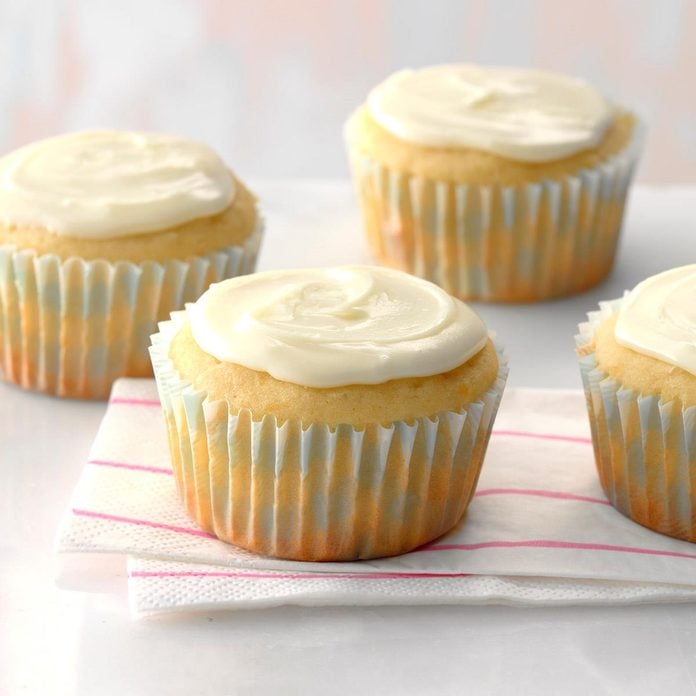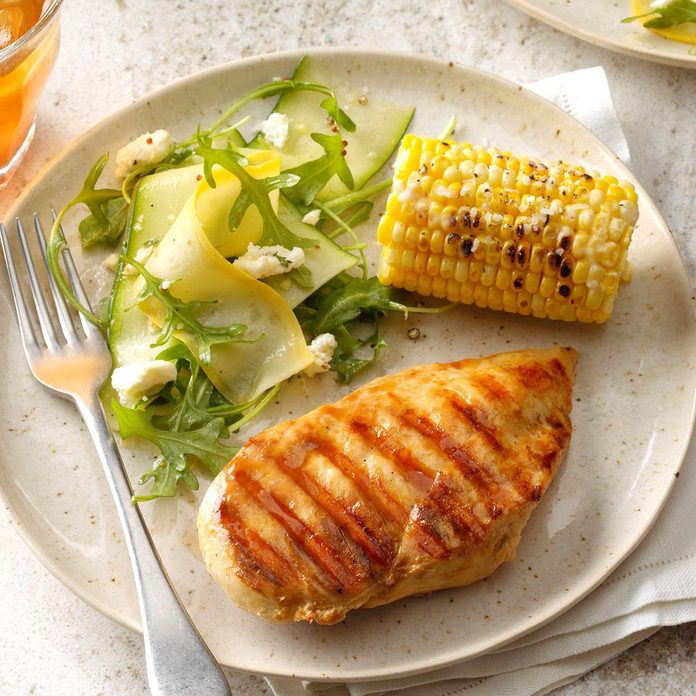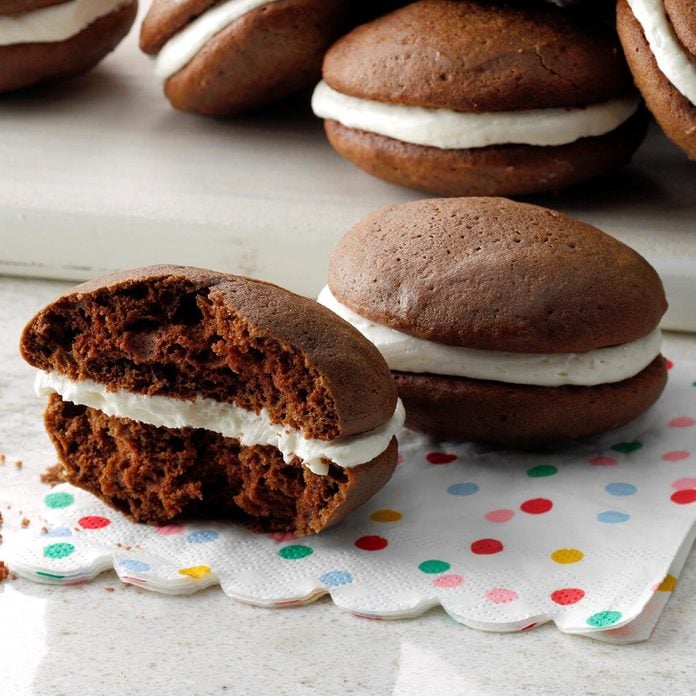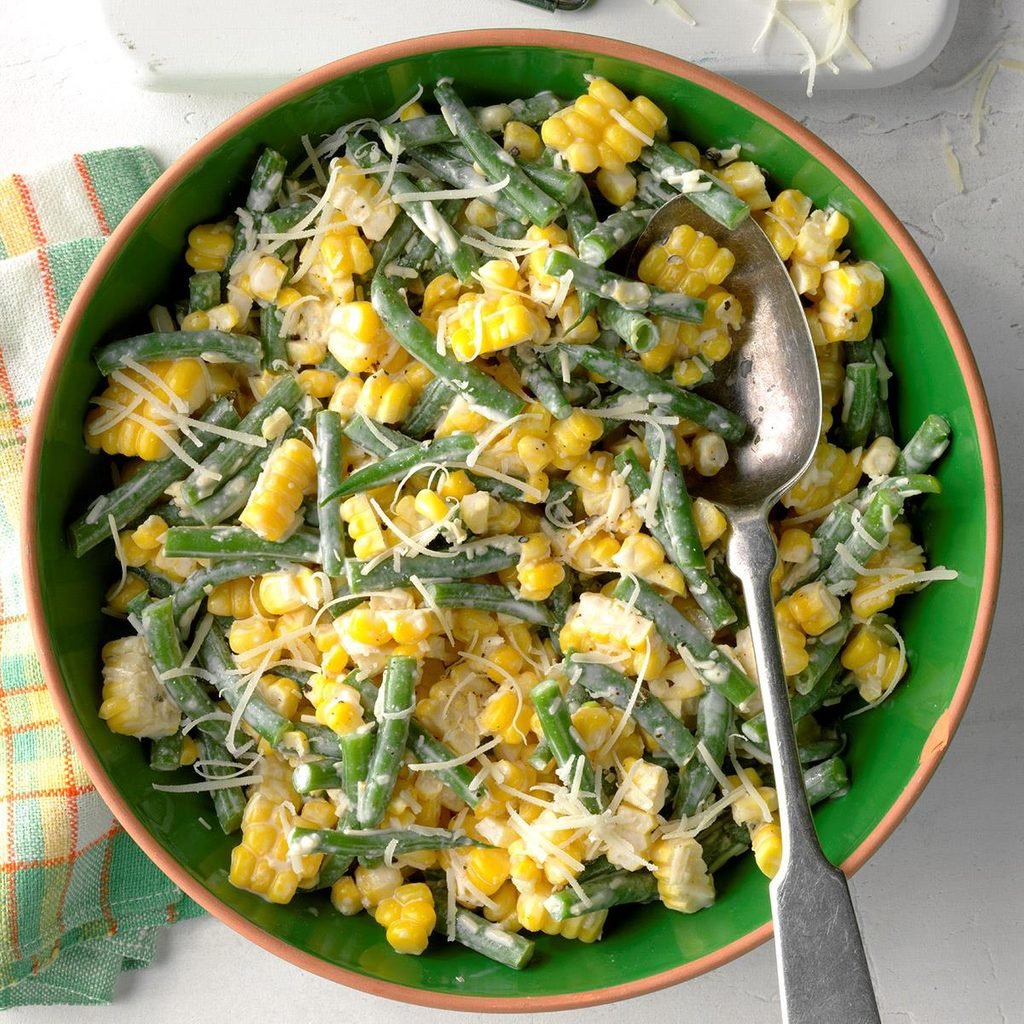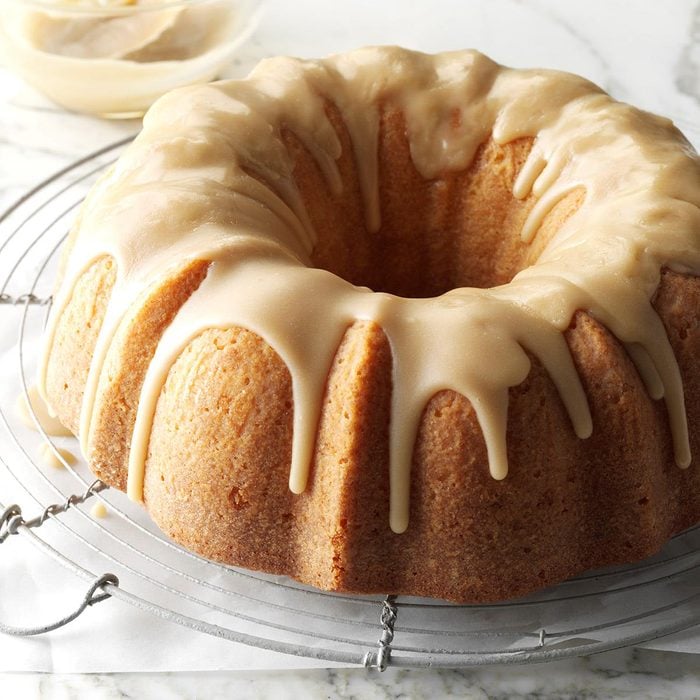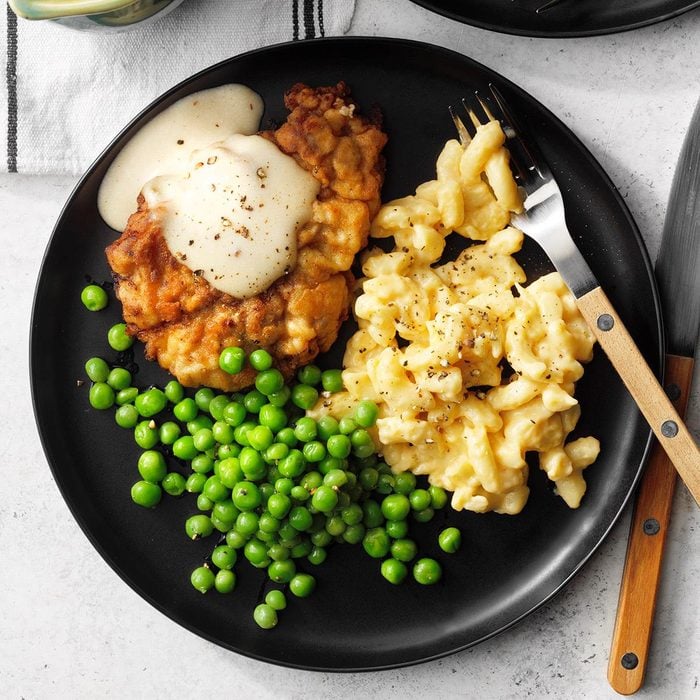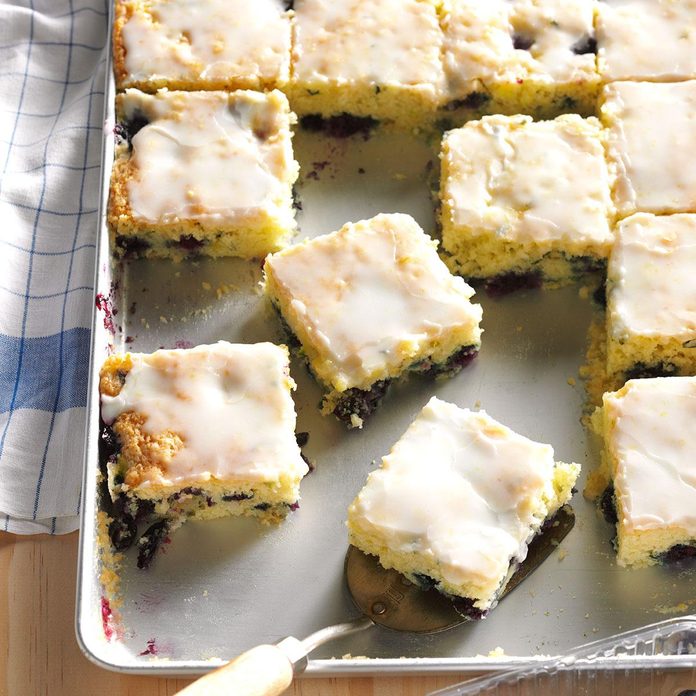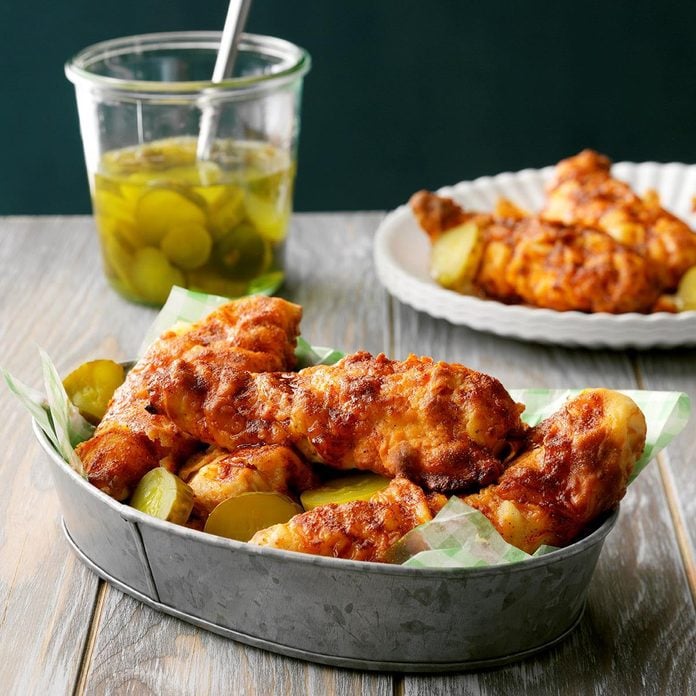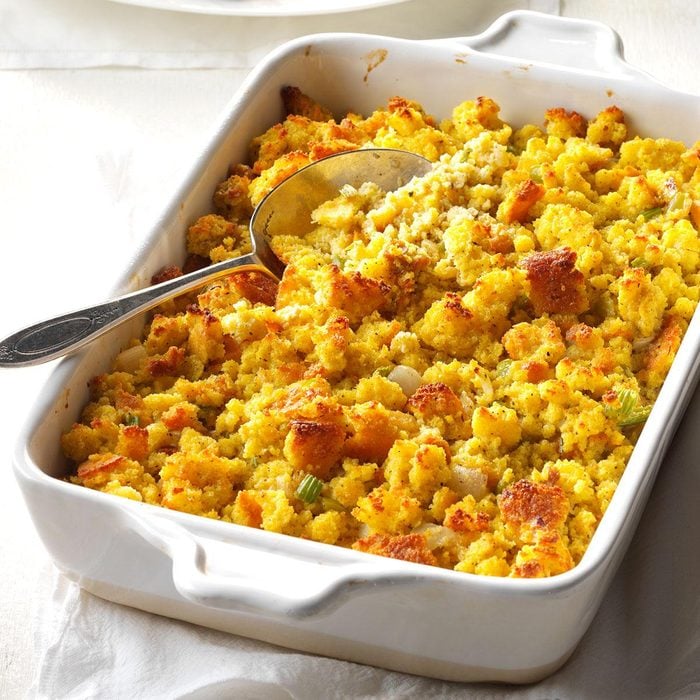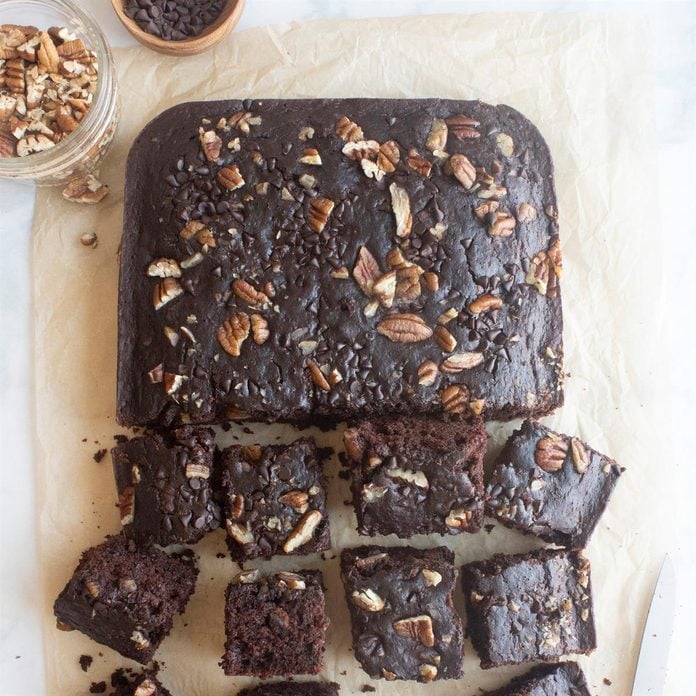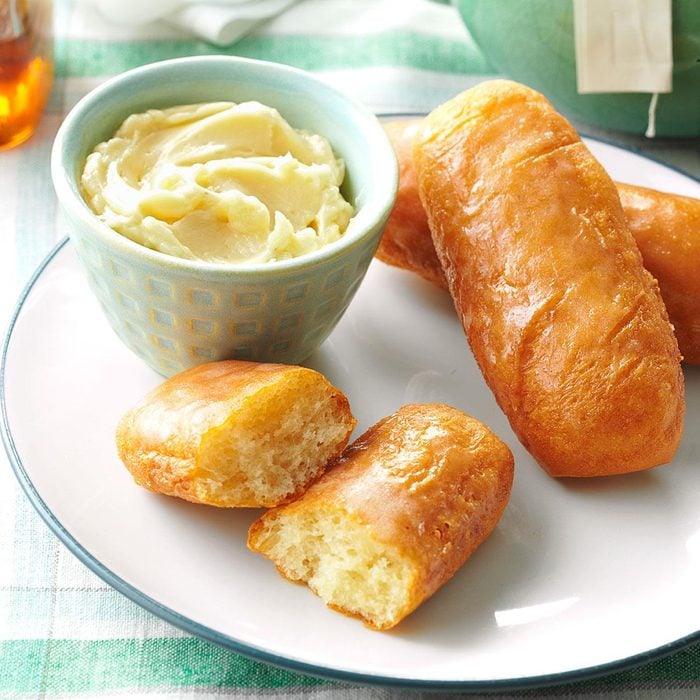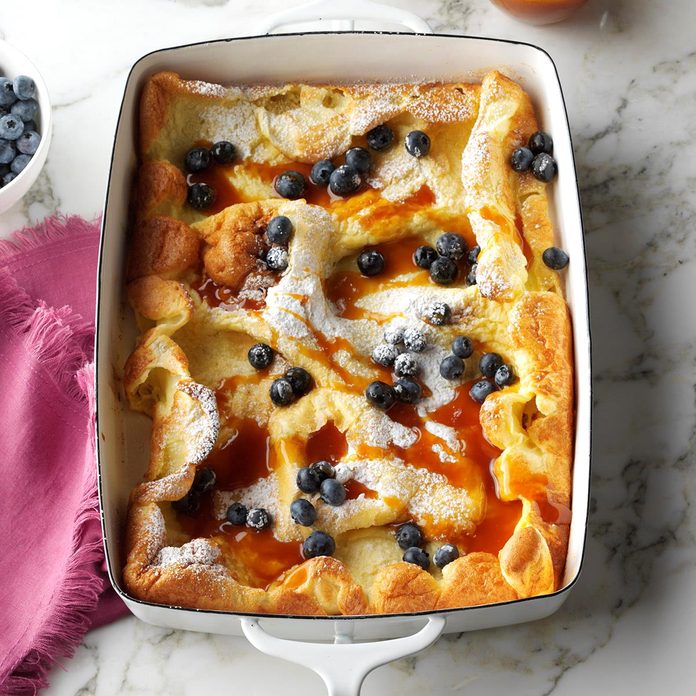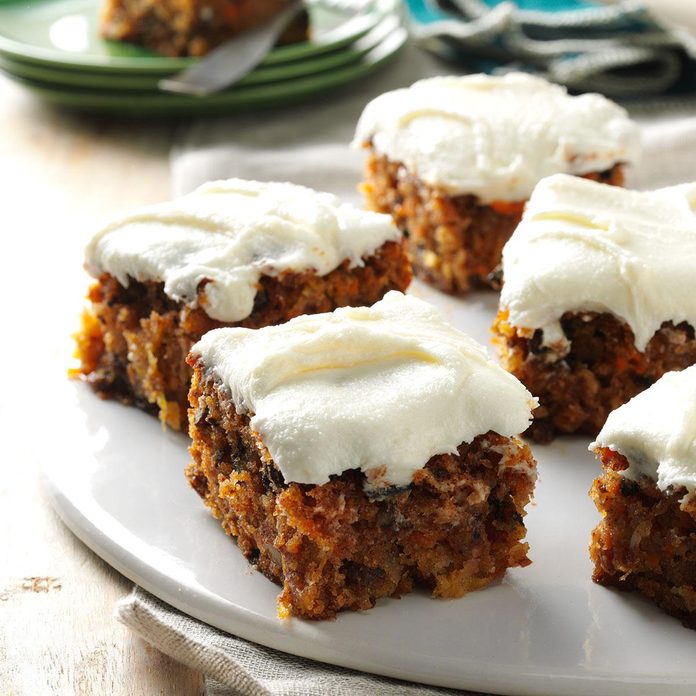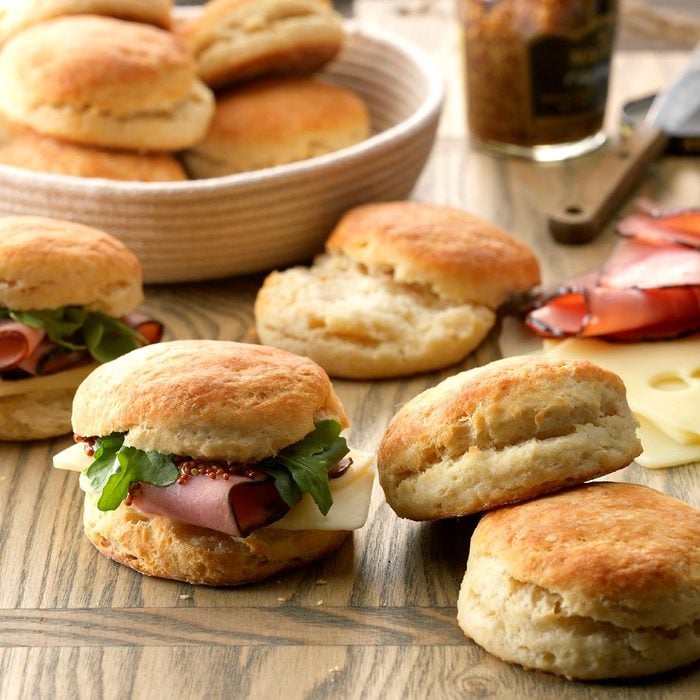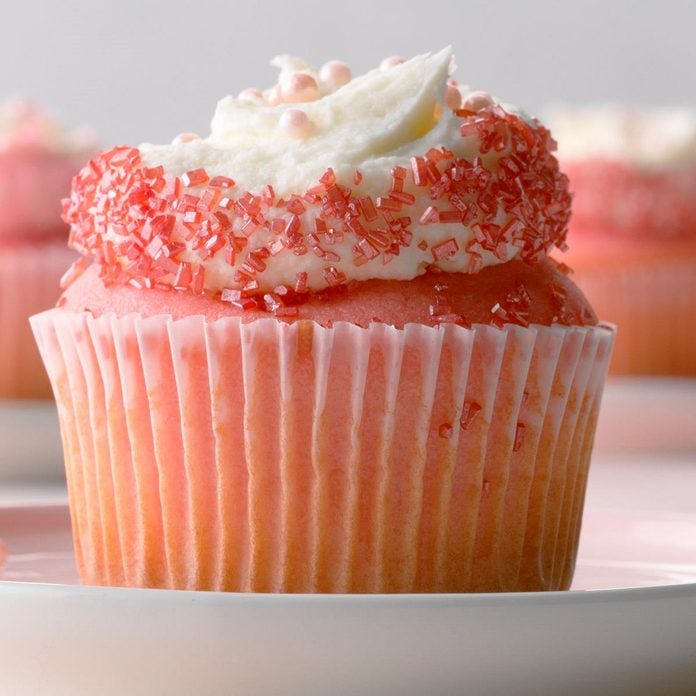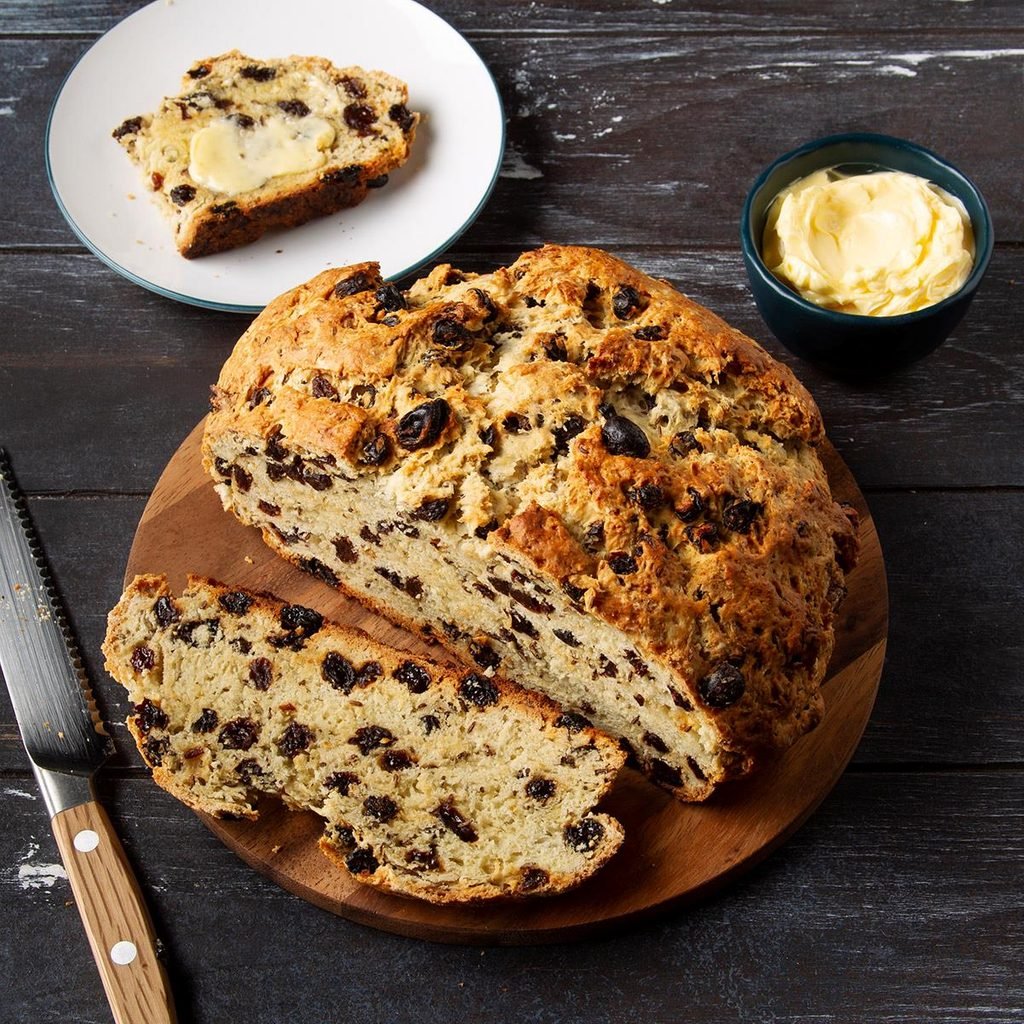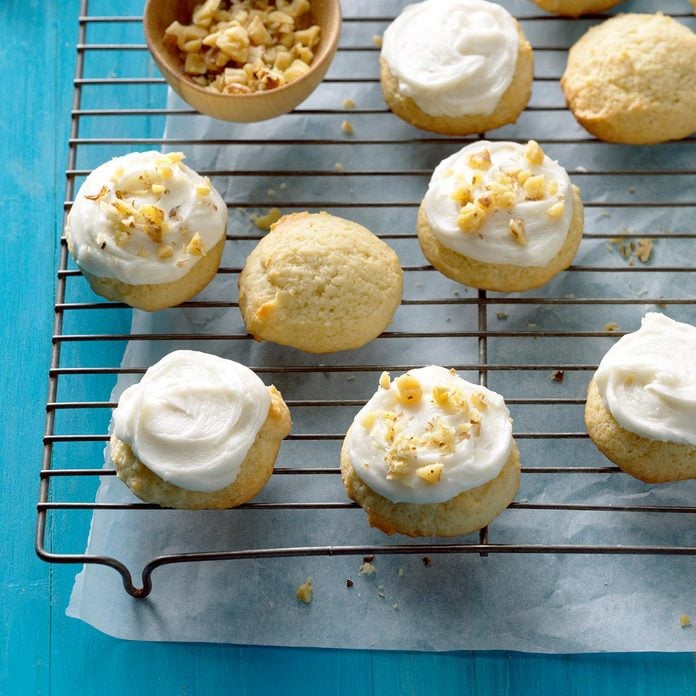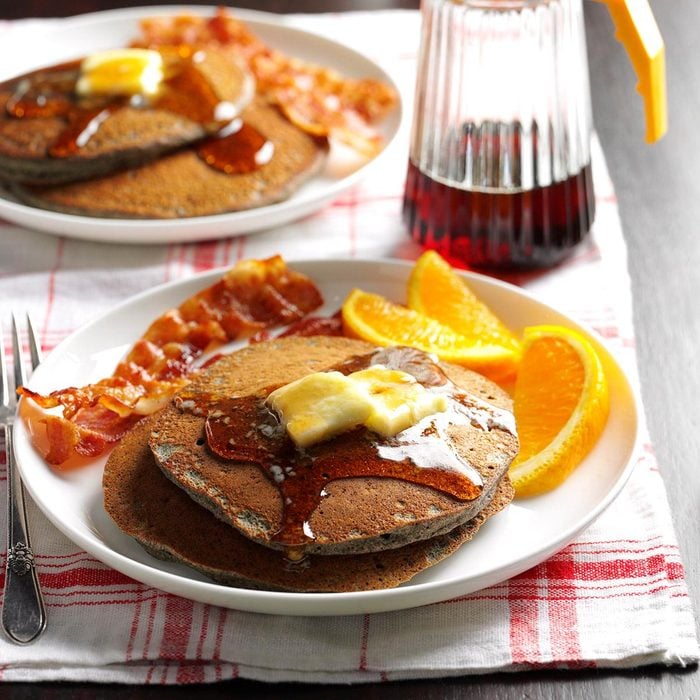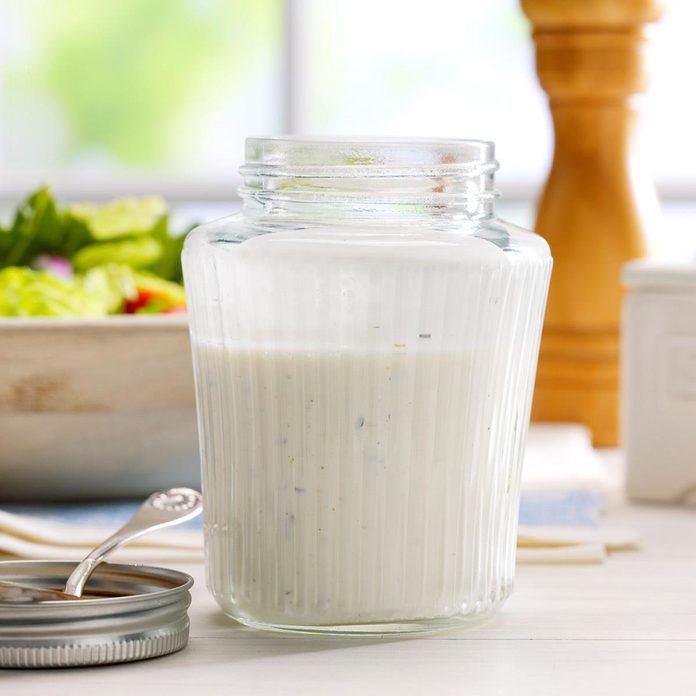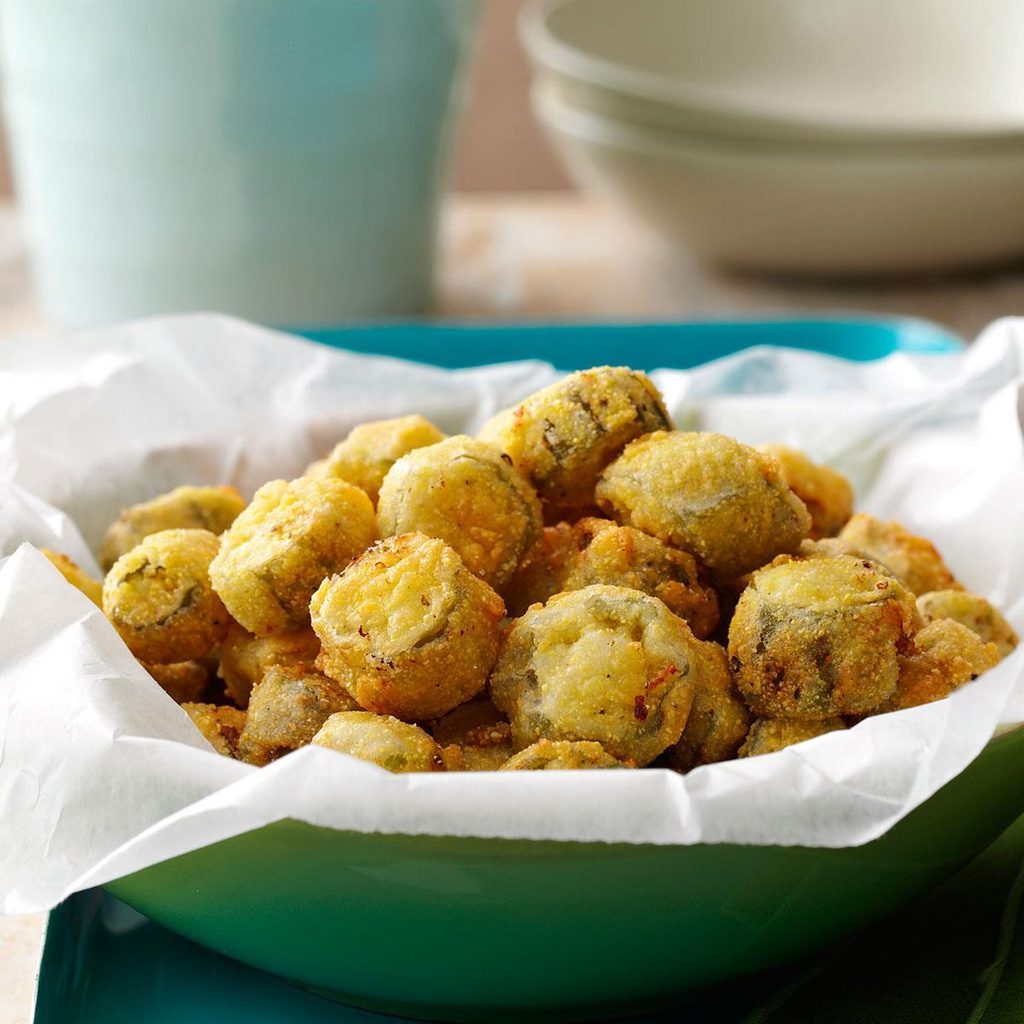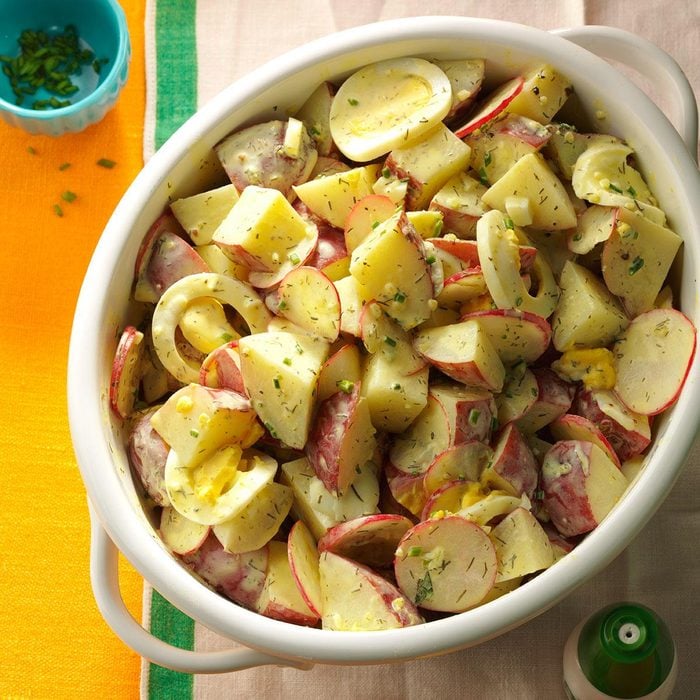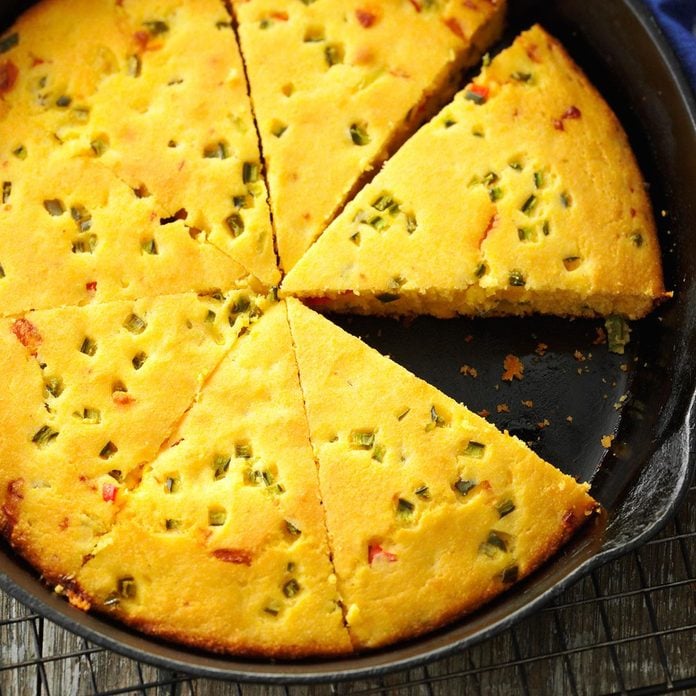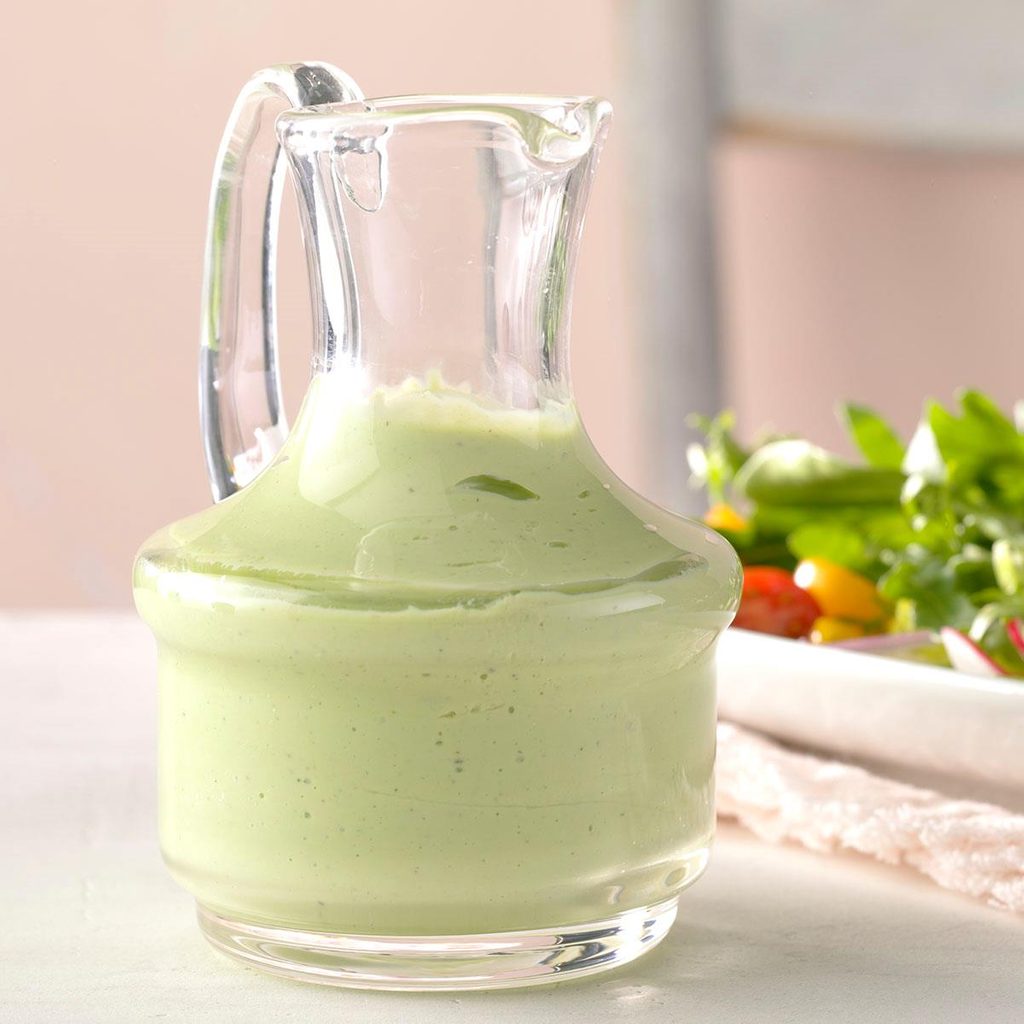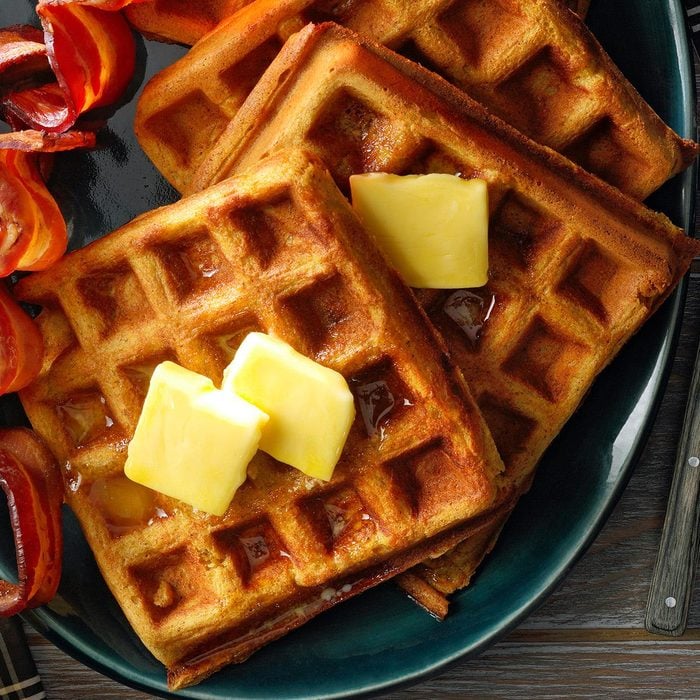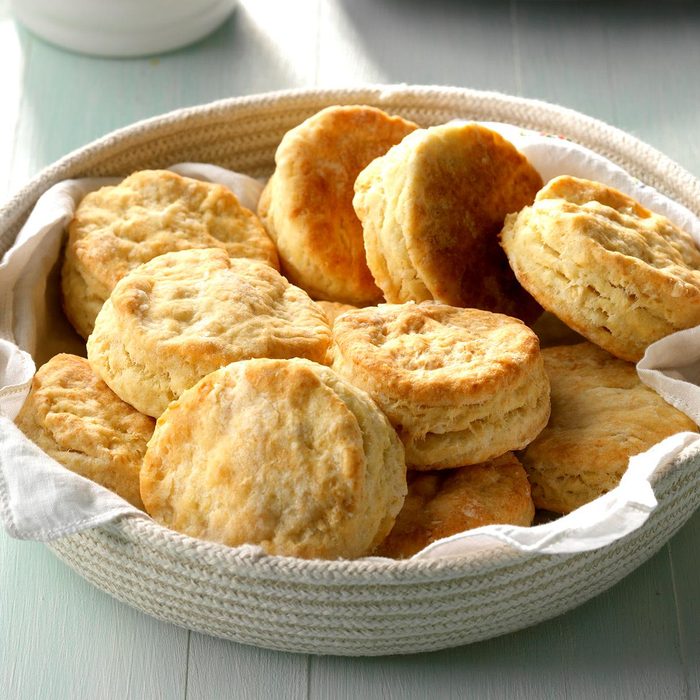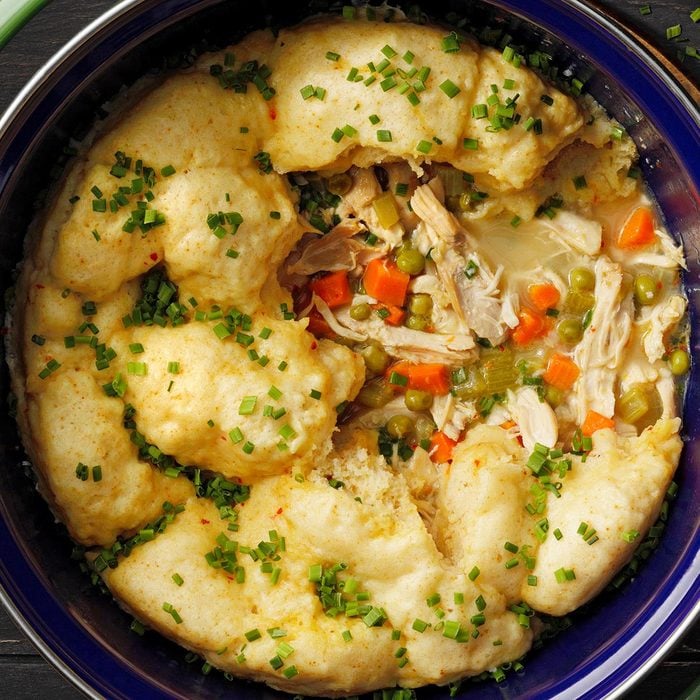Buttermilk Chocolate Chip PancakesAt our house, Saturday morning always means pancakes for breakfast. I make the menu special by servings up stacks of these fluffy buttermilk treats studded with mini chips. —Julianne Johnson, Grove City, Minnesota
Learn
why buttermilk makes recipes taste so much better.
Homemade Confetti CakeThis is a moist and fluffy vanilla cake with lots of sprinkles and a whipped vanilla buttercream. It's almost impossible not to feel happy when you see the fun pop of rainbow confetti! —Courtney Rich, Highland, UT
Out of buttermilk? Here's how to make
buttermilk substites at home.
Picnic Fried ChickenFor our family, it's not a picnic unless we have fried chicken! Chicken, deviled eggs and potato salad are all musts for a picnic as far as my husband is concerned. This is a golden oldie recipe for me—I've used it any number of times. —Edna Hoffman, Hebron, Indiana
Buttermilk Mashed PotatoesMy sister-in-law, who is a dietitian, shared these buttermilk mashed potatoes with me. The garlic and buttermilk in these smooth mashed potatoes that are better for you than typical versions that include lots of butter. —Stephanie Bremson of Kansas City, Missouri
Old-Fashioned Buttermilk DoughnutsGuests will have a touch of nostalgia when they bite into one of these old-fashioned doughnuts. Accents of nutmeg and cinnamon, along with a subtle burst of lemon, make them hard to resist. — June Jones, Harveyville, Kansas
Buttermilk Pie with PecansBranch out from the usual pecan pie with a creamy-crunchy version that comes out of the oven golden brown. Big pieces are even better with a generous dollop of whipped cream. —Kathy Harding, Richmond, Missouri
Favorite Mexican CornbreadI love to cook and my supportive and encouraging mom finally convinced me to submit this recipe. I often serve this cornbread with chili. —Donna Hypes, Ramona, California
Ranch DressingWhy buy bottled ranch dressing when this recipe is so easy to make—and tastes so much better! Fresh chives are a colorful addition if you have them on hand. —Taste of Home Test Kitchen, Milwaukee, Wisconsin
Dad's Blueberry Buttermilk PancakesMy dad makes blueberry pancakes for us every Saturday without fail. The combination of oats, cornmeal and buttermilk in the batter gives the pancakes heartiness we can't resist. —Gabrielle Short, Pleasant Hill, Iowa
Red Velvet CheesecakeFestive and oh, so good, this cheesecake will become a fixture on your Christmas dessert menu. The red velvet filling is spiked with cocoa, topped with cream cheese frosting and baked in a chocolate cookie crumb crust. —Karen Dively, Chapin, South Carolina
Coconut Chicken Tenders with Creamy Caribbean SalsaThis coconut chicken tenders recipe is such a fun change of pace. The salsa's tropical flavor makes the dish fresh and bright. —Jane Estrin, Jacksonville, Florida
Orange Buttermilk CupcakesSimple and delicious, this is our all-time favorite low-fat dessert. You'll be surprised how well the citrus flavor comes through in every bite.
Grilled Buttermilk ChickenI created this recipe years ago after one of our farmers market customers, a chef, shared the idea of marinating chicken in buttermilk. The chicken is easy to prepare and always turns out moist and delicious! I bruise the thyme sprigs by twisting them before adding them to the buttermilk mixture; this tends to release the oils in the leaves and flavor the chicken better. —Sue Gronholz, Beaver Dam, Wisconsin
Old-Fashioned Whoopie PiesWho can resist soft chocolate sandwich cookies filled with a layer of fluffy white frosting? Mom has made these for years. They're a treat that never lasts very long with me and my two brothers around. —Maria Costello, Monroe, North Carolina
Corn and Green Bean SaladI love the crunch of veggies, so I combined them with a buttermilk Caesar dressing in this corn and green bean salad. It's good served immediately, but it's even better after chilling for a few hours. —Arlene Erlbach, Morton Grove, Illinois
Buttermilk Cake with Caramel IcingThis fabulous cake and caramel frosting are so tender, it melts in your mouth. It's been a family favorite since the '70s and it goes over really well at church potluck meals. —Anna Jean Allen, West Liberty, Kentucky
Chicken-Fried SteaksMy husband asks me to prepare this easy chicken fried steak recipe regularly. I like it because it's so simple to make.
—Denice Louk, Garnett, Kansas
Blueberry Zucchini SquaresI saw a bar recipe using apple and lemon zest on a muffin mix. I tried it from scratch with shredded zucchini and fresh blueberries instead. It’s a nifty combo. —Shelly Bevington, Hermiston, Oregon
Air-Fryer Nashville Hot ChickenI live in Tennessee and absolutely love our state's famous Nashville hot chicken. To make cooking it easier, I thought I’d try air-frying. I’m so glad I did—this Nashville hot chicken recipe is almost better than the original. —April Lane, Greeneville, Tennessee
Grandma's Cornbread DressingGrowing up, we didn’t have turkey. We had chicken, chopped and baked in my grandmother’s dressing. Now we leave out the chicken and keep the cornbread dressing. —Suzanne Mohme, Bastrop, Texas
Devil’s Food Snack CakeMy husband and his friends request this devil's food snack cake for camping trips because it’s easy to transport. That makes it great for taking to potlucks and other events, too, as there's no frosting involved. —Julie Danler, Bel Aire, Kansas
Utah Buttermilk SconesButtermilk makes these classic Utah scones so delightful that you'll most likely eat too many. The texture is light and airy and the taste is delightful. It's a family favorite we eat often. Don't forget the honey butter—it's the perfect addition to the perfect scone. —Nichole Jones, Pleasant Grove, Utah
German PancakePiping hot and puffy from the oven, this golden pancake made a pretty presentation for a skier's theme breakfast I hosted. Served with homemade buttermilk syrup, it's an eye-opening treat. Make several German pancakes if you're feeding a crowd, and keep in mind that my easy syrup tastes great on waffles and French toast, too. —Renae Moncur, Burley, Idaho
Tropical Carrot CakeI look forward to August because our family reunion means fun and great food, like this classic cake with the special flair it gets from pineapple. My great-aunt gave me this recipe, and I always make it for the reunion.
—Victoria Casey, Enterprise, Oregon
Angel BiscuitsI first received a sample of these light, wonderful angel biscuits, along with the recipe, from an elderly gentleman friend. I now bake them often as a Saturday-morning treat, served with butter and honey. They're perfect with sausage gravy, too! —Faye Hintz, Springfield, Missouri
Pink Velvet CupcakesMy daughter loves all things pink, so this recipe was just right for her birthday. Even my teenage son (not a fan of pink) ate his share, too. —Paulette Smith, Winston-Salem, North Carolina
Homemade Irish Soda BreadSome people consider bread to be the most important part of a meal...and this Irish bread satisfies such folks! This recipe is by far the best soda bread I've ever tried. With the addition of raisins, it is moist and delicious! —Evelyn Kenney, Trenton, New Jersey
Buttermilk-Mushroom Pork ChopsI went through several variations before creating the pork chops my family considers perfect! I wanted something rich, delicious and tasty that was still relatively healthy. This is a delicious
Sunday dinner idea because you can pop it in the slow cooker in the morning and let it cook while you are at church! I suggest serving it with salad or grilled asparagus. —Kristin Stone, Little Elm, Texa
Mom's Buttermilk CookiesI treasure my mother’s recipe for these comforting cookie pillows. The tender treats are topped with thick frosting and a sprinkling of chopped walnuts. —Jane Darling, Simi Valley, California
Buttermilk Buckwheat PancakesThis buckwheat pancake recipe uses buckwheat flour instead of the wheat-based variety. The light and tender buckwheat pancakes offer a nutty flavor and hearty texture. —Taste of Home Test Kitchen
Basic Buttermilk Salad DressingWhen serving salad to a crowd, this easy buttermilk ranch dressing comes in handy. It make a full quart of creamy, delicious dressing to toss with your favorite greens and veggies. —Patricia Mele, Lower Burrell, Pennsylvania
Spicy Fried OkraThis fried veggie is a southern delicacy that's sure to add excitement to any summer meal. — Rashanda Cobbins, Milwaukee, Wisconsin
Tangy Potato Salad with RadishesSummer's approach makes my family think of potato salad. This tangy side is also great in the winter when it's served hot with cubed ham. —Peggy Gwillim, Strasbourg, Saskatchewan
Jalapeno Buttermilk CornbreadIf you’re from the South, you have to have a good cornbread recipe. Here’s a lightened-up version of my mom’s traditional cornbread that tastes just as delicious. —Debi Mitchell, Flower Mound, Texas
Avocado Salad DressingButtermilk and plain yogurt create the base for this thick avocado salad dressing, which gets its color from avocado and parsley. The mild mixture is refreshing when dolloped over a tossed green salad. —Taste of Home Test Kitchen
Buttermilk Pumpkin WafflesMy girlfriend loves pumpkin, so I enjoy making these fluffy pumpkin waffles for her on cool Sunday mornings. —Charles Insler, Silver Spring, Maryland
Mom's Buttermilk BiscuitsThese fluffy buttermilk biscuits are so tasty slathered with butter or used to mop up every last drop of gravy off your plate. I can still see Mom pulling these tender gems out of the oven. —Vera Reid, Laramie, Wyoming
Chicken & DumplingsAfter a very long week, I needed some comfort food, so I made this meal on a whim. Cayenne pepper gives it a little kick and rotisserie chicken drastically cuts the prep time, so we don't have to wait long for dinner to be ready. — Jessica Rehs, Cuyahoga Falls, Ohio
Up Next: Baking with Buttermilk Will Change Your Bakes for Good
